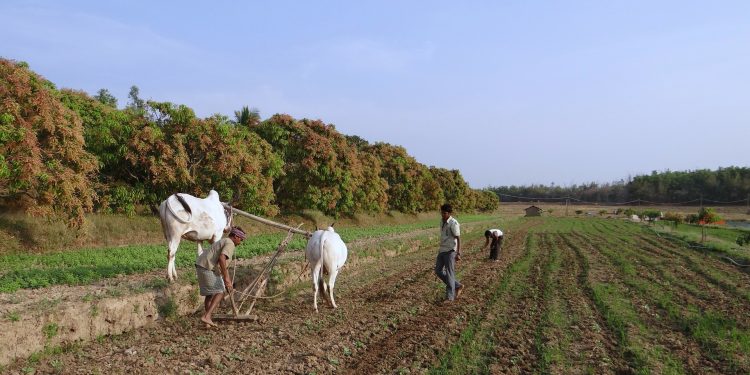The Indian Crop Insurance Scheme

Introduction to the Crop Insurance Scheme
The Indian government has approved of a $1.3 billion Prime Minister crop insurance scheme for farmers and cultivators, in order to protect them from crop failures, and the depression and misery that ensue in their wake. Indeed, the year-long drought that is steadily annihilating the Indian farming industry has affected much more than the crops—it has also heavily impacted many diligent and committed lives, and those of their families as well. In fact, as reported by The Guardian, “more than 300,000 farmers have killed themselves in India since 1995”.
As said by the home minister, Rajnath Singh, “The scheme will be a protection shield against instances of farmer suicides because of crop failures or damage because of nature”. Under this measure, the farmers will have to pay a premium of only 1.5% for all rabi crops, and 2% for Kharif crops. Additionally, there will be no upper limit on the subsidy provided by the Indian government, in order to balance the premium. This scheme is essentially an improvement of the NDA scheme of 1999; now, the government is aiming to approach and access 50% of the affected farmers—in order to widen the effectiveness of this scheme. To many, the Indian crop insurance scheme may seem like the ideal solution to the multitude of problems that shadow the farming industry.
The Positive Aspects of this Initiative
There has been positive response to this national initiative; in the words of Dr. MJ Khan, Chairman of Indian Council of Food and Agriculture, “[This measure] frees Indian farmers from the fear of crop failure and is a strong political message from the government.” Indeed, the rationales behind the execution of the crop scheme address some very crucial issues, that are highly pertinent to today’s agricultural industry. As reported by First Post, there are two prime reasons for the implementation of this scheme—climactic instabilities, and consequent financial distress. It is a sorry reality that the weather conditions in India, especially the much-awaited Monsoon rains, are extremely erratic; as a result, crop failures have become commonplace—which then leads cultivators to a financial quandary. This crop scheme serves to directly address the latter problem.
Criticism and Challenges to this Measure
That said, the response to this government measure has not been entirely positive. Many believe that this has been done for purely political reasons—such that the government can gain the support of the numerous farmers across the country. As reported by Daily Mail, “it is also an attempt by Narendra Modi’s government to woo the country’s powerful farming community after drubbings in two recent state elections.” Moreover, there are numerous challenges to this scheme—primarily, farmer illiteracy and ignorance, inaccessibility to smaller farmers, and lack of knowledge of weather data in local, rural regions.
Furthermore, it has been reported by the Economic Times that crop insurance in India needs “innovation, not subsidy”; innovation includes the installation of drones and remote-sensing equipment—since products have to made available to individual farmers, many of whom live in rather inaccessible regions. In addition, the insurance companies approach this measure with mixed feelings—since while their business prospects will improve, the payouts may risk their own profitability.
Conclusion
Nonetheless, although this measure has met with a substantial amount of criticism, it still has the capability and potential to save the lives of farmers across the country; indeed, this can be a major step toward the achievement of poverty alleviation across the agricultural sector of the Indian subcontinent. In fact, as said by Narendra Modi, “This scheme not just retains the best features of past policies but also rectifies all previous shortcomings… This is a historic day”.
[Image Attribute: sarangib]



